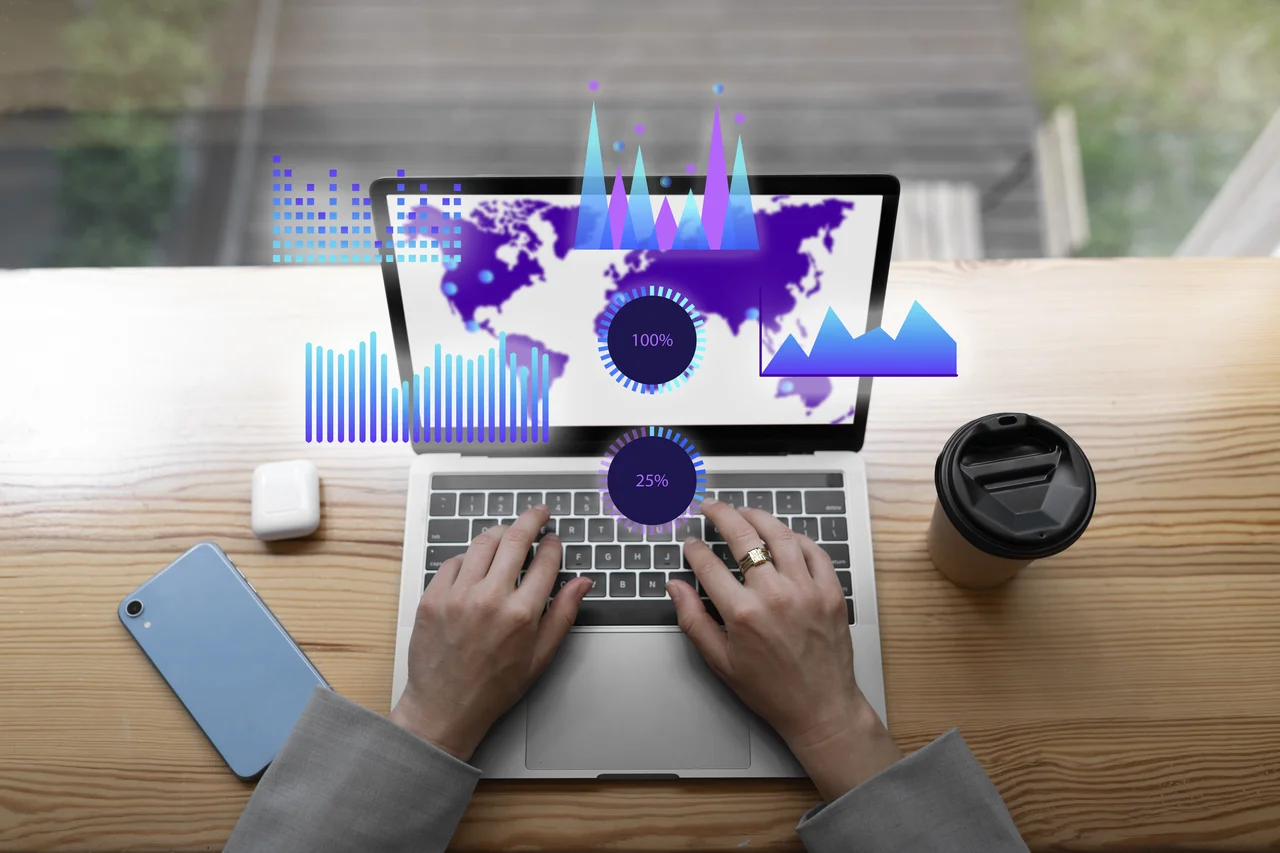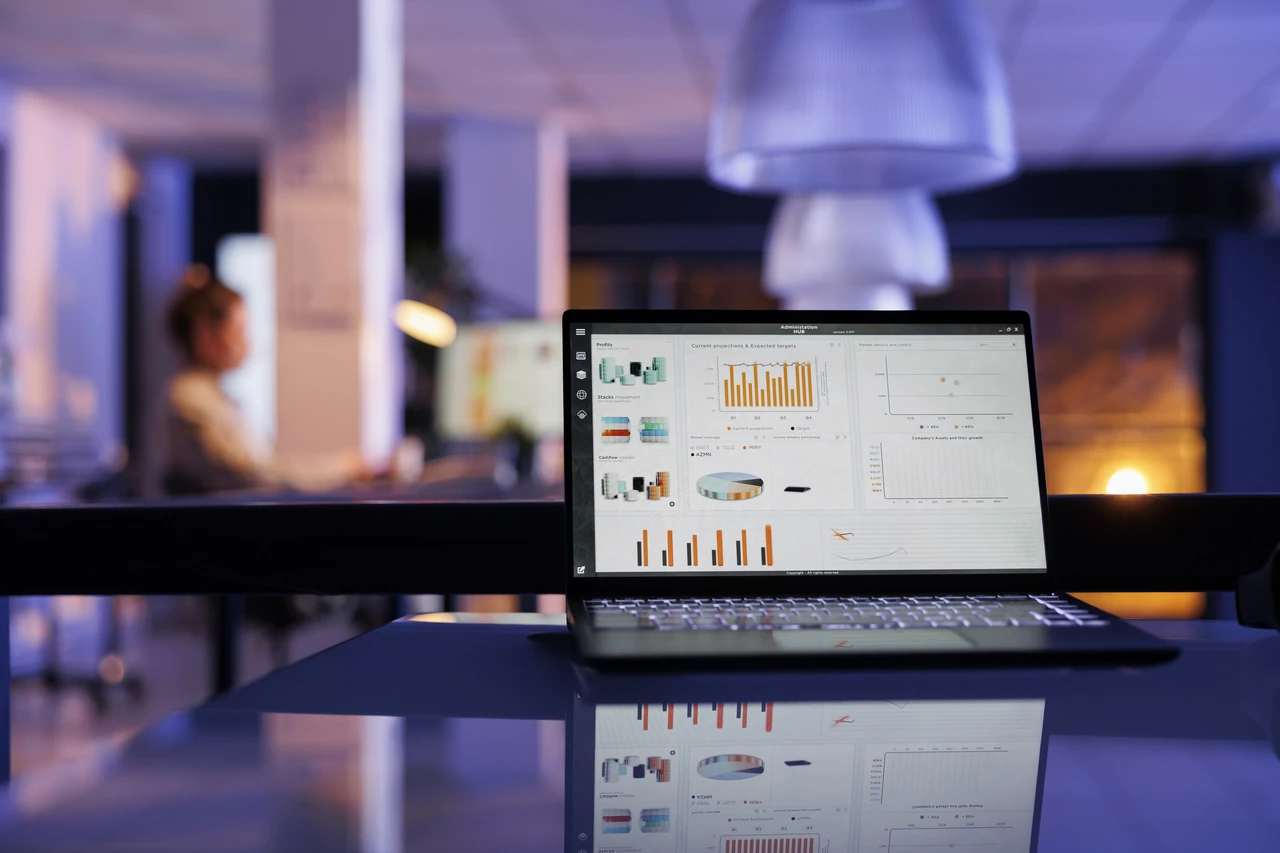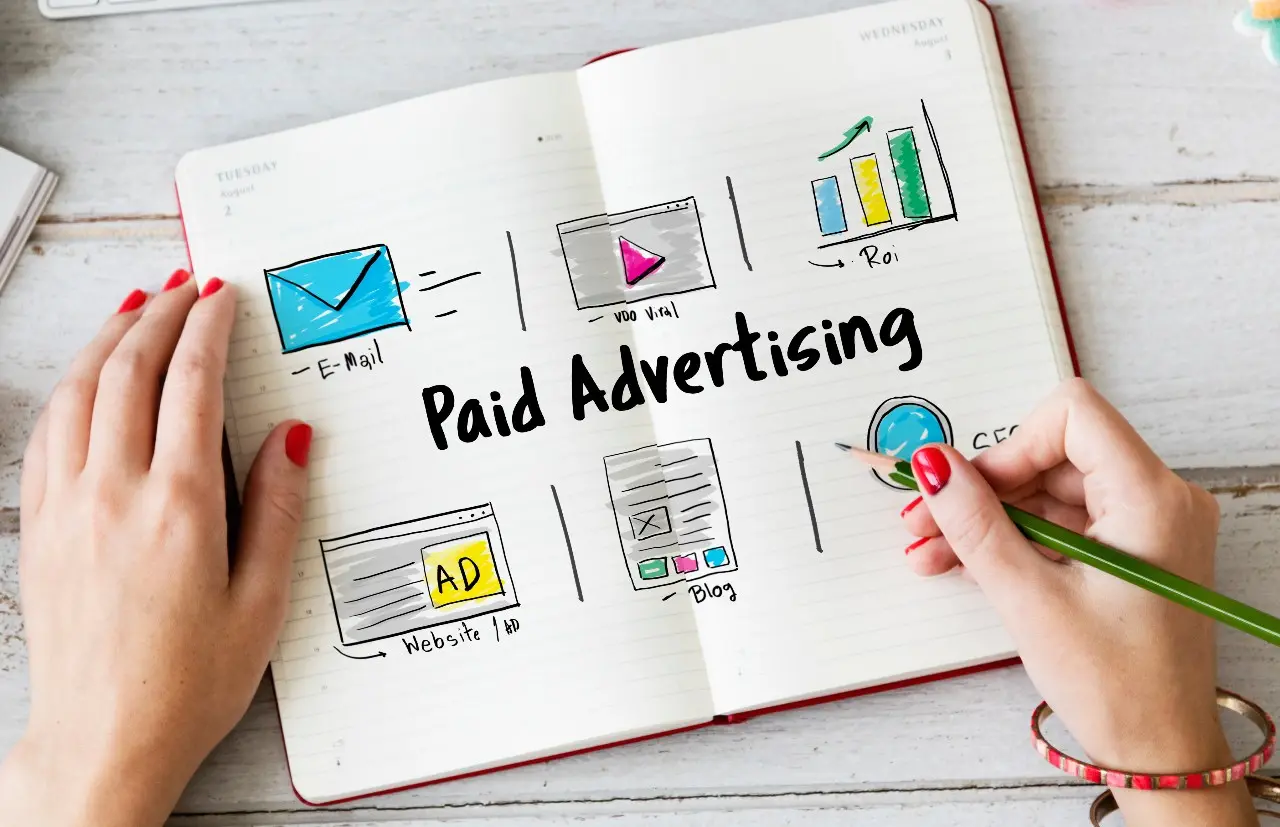Listen to article
Ever wonder where successful B2B marketers are placing their bets—and their budget? With the B2B landscape constantly evolving, smart marketing channel selection is more critical than ever. Are you making the right choices to maximize your ROI?
Recent data reveals fascinating trends in how B2B companies allocate their marketing resources, which channels they prioritize, and where they see the best results. From LinkedIn ads to video content, and the rising importance of YouTube and Facebook, the numbers tell a compelling story about what’s working right now.
In this article, we’ll dive into the latest statistics on B2B marketing budget allocation, examine which channels are dominating, and uncover key insights to help you optimize your own strategy. Let’s explore how marketers choose channels and what the numbers reveal.
Where Do B2B Marketers Invest Their Budgets?
In the competitive and complex B2B landscape, understanding how marketers allocate their budgets offers a glimpse into strategic priorities and evolving opportunities. Today, successful B2B marketing is no longer about doing everything—it’s about doing the right things well. This means focusing on investments that not only generate immediate ROI but also build long-term brand equity and enhance customer experiences. The following statistics reveal how B2B companies are distributing their budgets to achieve these goals.
- B2B companies allocate an average of 9.7% of their total budget to marketing efforts. Source
- A significant 68% of B2B marketing leaders report having a larger budget compared to the previous year. Source
- An overwhelming 90% of B2B marketing leaders believe their marketing budget is appropriately aligned with their company’s revenue and growth objectives. Source, Source
- Looking at specific budget allocations, 19% of B2B marketing budgets are dedicated to advertising, followed closely by content (17%), tools and technology (16%), and personnel (12%). Source
- Brand building is becoming a priority, with 67% of B2B marketers increasing their budget allocations for these initiatives. Source
- Improving customer experience is another key focus, with 64% of B2B marketers increasing their budget for CX-related activities. Source
These numbers highlight a strategic shift in B2B marketing—one that prioritizes not only driving revenue but also fostering meaningful relationships with customers and amplifying brand value. The rise in spending on brand building and customer experience suggests that businesses now view these as critical levers for differentiation in saturated markets. By aligning their budgets with company growth objectives, marketers are positioning themselves as key contributors to overall business success.
For marketers, finding the right channels and strategies can sometimes mean seeking external expertise. For instance, outsourcing SEO services is increasingly becoming a practical solution for B2B companies that want to enhance their digital presence without overextending internal resources. This approach allows businesses to focus on overarching strategies while specialists handle the tactical execution.
Pro Tip:
When planning your budget, consider a mix of foundational and innovative investments. While tools, advertising, and content remain central, don’t overlook emerging opportunities like AI-driven personalization or interactive media to stay ahead of the curve.
Why LinkedIn Ads and Video Content are Leading the B2B Marketing Game
B2B marketing today is a delicate balance between platform precision and content creativity, and the data speaks volumes about where marketers are winning. LinkedIn ads have emerged as a cornerstone for customer acquisition, delivering unparalleled access to professional audiences. Simultaneously, video content has shot to the top as the most impactful content format, outpacing even trusted staples like case studies. If your strategy doesn’t include both, you might be leaving significant opportunities on the table.
- LinkedIn Ads for Customer Acquisition: 65% of B2B companies credit LinkedIn ads for successfully acquiring new customers, solidifying its status as the go-to platform for targeting professionals effectively. Source
- Video Content Takes the Spotlight: Videos have officially unseated case studies as the most effective B2B content type. Source
- 58% of B2B marketers now consider video their top-performing content, reflecting a substantial year-over-year rise. Source
- Case studies and customer stories are still relevant, with 53% of marketers finding them effective. Source
- E-books and white papers maintain a presence, used by 45% of B2B marketers. Source
- Research reports, another trusted format, are also utilized by 45% of marketers. Source
- Short articles and blog posts, though less dominant, still play a role, used by 43% of marketers. Source
The numbers don’t lie—video content and LinkedIn ads are leading the charge for B2B marketing strategies that deliver measurable results. As platforms and content formats evolve, it’s clear that relying solely on traditional materials like white papers or blog posts won’t cut it anymore. To stay ahead, B2B organizations must strategically allocate their budgets toward producing engaging video content and fine-tuning their LinkedIn ad campaigns to speak directly to their audiences’ pain points.
Pro Tip:
Don’t stop at posting videos or running ads. Dig deeper into your analytics to uncover trends—like which video length resonates most with your audience or what ad creative drives the highest conversion rates. Use these insights to refine and iterate your strategy for even greater ROI.
How B2B Buyers Engage with Marketing Channels: Key Insights for Marketers
In the increasingly competitive B2B landscape, understanding buyer behavior is essential for crafting effective marketing strategies. The channels buyers rely on—and how they interact with them—can vary widely, making it crucial for marketers to stay ahead of these preferences. Whether it’s leveraging the power of organic search, capitalizing on social media value, or optimizing paid campaigns, knowing where and how buyers consume information enables smarter budget allocation and better ROI.
- A notable 66% of B2B buyers prioritize internet search results when researching potential purchases, far outpacing online ads (35%) and social media (23%) in influence. Source
- On average, a B2B buyer performs 12 Google searches before finalizing a purchase decision. Source
- LinkedIn is a standout channel for B2B marketers, with 84% ranking it as the most valuable social media platform. Source
- Search engine marketing and PPC campaigns are considered the most effective paid channels by 61% of B2B marketers. Source
- Nearly half of B2B marketers (49%) find social media ads and promoted posts to be highly effective. Source
- Sponsorships are another popular choice, delivering value for 48% of B2B marketers. Source
- Digital display ads, while less dominant, still resonate with 35% of B2B marketers. Source
Takeaway: Build Multi-Channel Strategies That Align with Buyer Behavior
These statistics highlight a pivotal truth for B2B marketers: buyers gravitate toward information-driven channels like organic search and LinkedIn, but strong performances from paid campaigns and sponsorships demonstrate the value of a balanced strategy. Investing in SEO and content optimization is non-negotiable, as buyers conduct exhaustive research before making decisions. Additionally, leveraging high-value platforms such as LinkedIn and SEM/PPC campaigns can amplify your reach and help build trust. Experimenting across various channels—not just one or two—will provide you the insights needed to discover what resonates most with your audience.
Pro Tip:
Combine organic and paid efforts for maximum impact. For instance, use PPC campaigns to drive traffic to high-ranking SEO content or LinkedIn posts, creating a unified strategy that engages buyers at every stage of their journey.
Paid vs. Organic Channel Preferences and ROI
When choosing marketing channels, marketers weigh the reach and cost-effectiveness of organic methods against the targeting and measurability of paid advertising. ROI is a key factor in this decision.
- A majority of marketers leverage organic social media platforms (89%), blogs on corporate websites (84%), and email newsletters (71%) for organic reach. Source
- Website traffic remains a key inbound marketing objective, with 54% of marketers prioritizing its growth in the next 12 months. Source
- Among B2B marketers utilizing paid channels (84% of them), social media advertising and promoted posts are favored by 73%. Search engine marketing/pay-per-click (64%) and digital display advertising (62%) also hold significant importance. Source
- Email marketing leads the way with the highest ROI among digital marketing channels. Source
- Email marketing is closely followed by SEO, mobile marketing, and content marketing in terms of ROI. Source
Organic channels like social media, blogs, and email offer cost-effective ways to build brand awareness and engage with audiences. Paid channels, particularly social media advertising and search engine marketing, provide targeted reach and measurable results. Email, SEO, mobile, and content marketing provide the highest ROI. For businesses seeking to maximize their efforts across multiple channels without overwhelming internal resources, full-service marketing solutions can provide an integrated approach to combining organic and paid strategies, ensuring a balanced and effective campaign.
Shifting Focus to Video Powerhouses: Why YouTube and Facebook Deserve a Spotlight
As digital marketing tactics grow more visual, video platforms like YouTube and Facebook are emerging as cornerstones for content distribution. The demand for dynamic, engaging video content has pushed these platforms to the forefront, making them essential for brands looking to connect with modern audiences. For marketers, leveraging these video powerhouses represents an opportunity to not only expand their reach but also enhance audience engagement in ways that static content can’t achieve.
- YouTube’s Growing Role: Nearly half (48%) of marketers plan to add YouTube to their content strategy within the next year, a clear signal that video-dominant platforms are becoming a strategic priority. Source
- Facebook Video’s Continued Traction: Likewise, 46% of marketers aim to incorporate Facebook video into their upcoming strategies. This statistic demonstrates the platform’s sustained relevance in capturing audience attention with video. Source
The rise of YouTube and Facebook as video hubs highlights the shift toward platforms that allow for storytelling, brand visibility, and emotional resonance. But it’s not just about being present—it’s about adapting your approach to what works best on each. YouTube thrives on longer-form, search-friendly content, while Facebook is ideal for snappy, shareable videos that quickly capture attention.
Pro Tip:
Maximize your efforts by analyzing platform-specific data. On YouTube, optimize for search by using compelling thumbnails and SEO-friendly titles, while on Facebook, leverage short-form, captioned videos that cater to mobile-first audiences.
Diversifying Content Distribution: The Key to B2B Marketing Success
In the competitive landscape of B2B marketing, relying on a single or limited set of channels is no longer sufficient to engage audiences effectively. Today’s top-performing organizations understand that a multi-channel approach not only increases visibility but also strengthens their ability to connect with stakeholders at different touchpoints in the buyer’s journey. By exploring diverse content formats, marketers can ensure their message resonates across various platforms and meets the unique preferences of their audience.
- Optimal Channel Count: Research shows that high-performing B2B organizations use an average of five different content formats to distribute their message effectively. Source
- Underperforming Channel Count: Meanwhile, less successful organizations restrict their efforts to only four content formats, which may limit their ability to reach and engage key audiences. Source
A strong content marketing strategy hinges on variety. The data highlights a clear correlation between the number of content formats used and marketing success—underscoring the need for marketers to think expansively about how and where they distribute their content.
Pro Tip:
Don’t limit yourself to just common formats like blogs or whitepapers—consider incorporating videos, webinars, infographics, and even podcasts to engage your audience across different preferences and learning styles. Regularly analyze your performance data to refine your channel mix and stay ahead of shifting trends in content consumption.
Choosing the Right Marketing Channels: Balancing UX and Data-Driven Decisions
In the crowded marketing landscape, the key to winning over your audience lies in delivering value seamlessly while also backing every decision with clear, measurable insights. User experience (UX) and performance metrics like Key Performance Indicators (KPIs) are no longer just “nice-to-haves”—they are vital to building campaigns that resonate while proving ROI to stakeholders. When channels are chosen with both the user and the bottom line in mind, marketers can unlock scalable growth.
- According to a Clutch survey, 75% of participants say paid search ads make it easier to find the information they need on a website or search engine. Source
- Conversion rates emerge as the top KPI for marketing leaders when evaluating channel success. Source
- Alarmingly, 44% of businesses fail to grasp the quantitative impact of their marketing efforts, underscoring a critical gap in analytics. Source
- A remarkable 87% of marketers agree that data remains the most underutilized asset in driving marketing strategies. Source
Understanding these numbers reveals a crucial insight: simply adopting marketing channels isn’t enough. The real game-changer is leveraging data to measure impact and refining your approach based on actionable insights. Paid search ads, for instance, succeed because they prioritize user intent, proving that UX-focused strategies can coexist with measurable outcomes. However, gaps in data utilization and tracking KPIs indicate many businesses miss out on optimizing the channels they are already using.
Pro Tip:
Focus on creating a synergy between your analytics and strategy. Use advanced tools like Google Analytics, HubSpot, or Tableau to visualize your marketing metrics and connect them to UX improvements. The ability to adapt based on real-time data will help you stay ahead of your competition while maximizing every dollar spent.
Channel Effectiveness: ROI, Brand Recognition, and Sales
Selecting the right marketing channels involves careful consideration of ROI, brand recognition, and sales effectiveness. Marketers are increasingly using data to optimize their choices and achieve specific campaign goals.
- More than a quarter (26%) of users click on paid search ads because they recognize the brand name featured in the ad. Source
- For those who click on advertisements, they are twice as likely to purchase a good or service from your website compared to organic visitors. Source
- The average conversion rate across all industries for Facebook advertising is 9.21%. Source
- 70% of survey respondents find SEO more effective for generating sales than PPC, whereas 30% believe PPC is superior. Source
- 42% of marketers report that proving the return on investment (ROI) of marketing activities will be a top inbound marketing priority over the next year. Source
These metrics highlight the importance of aligning channel selection with specific campaign goals. Whether it’s leveraging brand recognition through paid search, capitalizing on the higher purchase intent of ad clickers, optimizing Facebook ad conversion rates, or prioritizing SEO for long-term sales, a data-informed approach is essential. Combine SEO with PPC to maximize visibility and capture different segments of your target audience, catering to both immediate and long-term sales generation.
How Gen Z’s Social Media Habits Shape Product Discovery
When it comes to connecting with younger audiences, understanding their preferred platforms is non-negotiable. For Gen Z, social media isn’t just for scrolling—it’s a hub of inspiration, product discovery, and brand interaction. This generation views social platforms as trusted sources for finding the latest trends, making it critical for marketers to meet them where they are most active online.
- 64% of Gen Z individuals prefer discovering products through social media channels over any other method. Source
The data speaks volumes: if your brand isn’t leveraging social media as a key discovery tool for Gen Z, you’re leaving an untapped opportunity on the table. From short-form videos to influencer collaborations, the content you create needs to mirror Gen Z’s appetite for authenticity, visual appeal, and cultural relevance.
Pro Tip:
Don’t treat social media as a one-size-fits-all platform. Experiment with emerging platforms like BeReal, explore interactive formats like polls or AR filters, and cultivate a two-way conversation by engaging with user comments and content. By staying agile and responsive, you can turn Gen Z’s love for social media into a long-term connection with your brand.
Unlocking the Impact of Location-Based Advertising
Harnessing the power of location-based advertising is no longer a nice-to-have; it’s a must for marketers aiming to maximize impact. With consumers expecting hyper-relevant and contextually aligned messaging, targeting specific geographic areas has emerged as a game-changing strategy. Whether you’re a local business trying to reach customers nearby or a global brand tailoring campaigns to regional audiences, location-based ads offer unmatched effectiveness over more generic methods.
- Digital ad campaigns that target specific locations are 20 times more successful than traditional banner advertising that is not location-based. Source
Takeaway: Relevance Drives Results
Location-based advertising doesn’t just put your message in front of people; it delivers it at the precise time and place they’re most likely to engage. This strategy bridges the gap between online visibility and offline conversions by tapping into local intent, making your campaigns feel personal and timely. As consumer expectations for personalized experiences continue to rise, leveraging location targeting is an essential step to stay competitive and boost ROI.
Unlock even more potential from location-based advertising by integrating advanced targeting features like geofencing, where you serve ads to users as they enter specific areas. Pair this with real-time analytics to track campaign performance and dynamically adjust your strategy for optimal results.
The Role of Search Engines in E-commerce Traffic: Organic vs. Paid Dynamics
In the competitive e-commerce landscape, search engines act as the primary gateway for attracting potential buyers. But not all search-driven traffic is created equal. Understanding the interplay between organic and paid search is essential to building a strategy that balances short-term wins with long-term sustainability. For businesses aiming to compete in crowded digital marketplaces, these numbers reveal where the real opportunities lie.
- Approximately 39% of all e-commerce traffic globally originates from search engines. Source
- Organic search accounts for 35% of e-commerce traffic, making it the largest contributor within search-driven visitors. Source
- Paid search advertisements contribute to only 4% of e-commerce traffic worldwide. Source
The data underscores the sheer importance of organic search in driving e-commerce growth. While paid search campaigns excel at delivering quick visibility, their limited contribution to overall traffic highlights the need for a resilient SEO foundation. By focusing on long-term organic search optimization—such as improving site structure, creating high-quality content, and building authoritative backlinks—businesses can secure sustainable traffic that pays dividends over time.
To get the most out of both channels, consider a hybrid strategy. Use paid search to capture high-intent shoppers during peak seasons or new product launches, while continuously investing in SEO to ensure consistent, cost-effective growth in search visibility. This dual approach helps you adapt to both immediate market demands and future trends.
Conclusion
The world of marketing channel selection has never been more dynamic, with data pointing directly to the most effective strategies for B2B success. From the enduring strength of organic search to the rising influence of video content and LinkedIn ads, one thing is clear: successful marketers meet their audiences where they are. Whether it’s tailoring content for specific platforms like YouTube and Facebook Video, optimizing paid campaigns for measurable ROI, or leveraging email marketing for its unparalleled returns, today’s strategies are all about precision and alignment with business goals.
What’s equally important is balancing short-term wins and long-term growth. Paid channels like PPC can offer immediate results, while investments in SEO and content marketing create a foundation for lasting visibility. As marketers increasingly integrate insights, tools, and technologies, the focus shifts to creating campaigns that are both data-driven and human-centric.
Want to see how these trends can work for your business? Ready to boost your traffic and grow your website? Your customers are looking for you, and our SEO services can help you be found across search engines. Explore the possibilities and let’s drive measurable success together.
About Creating Marketing Channel Selection Trends for B2B in 2025
This guide was written by the Scopic Studios team and reviewed by Araksya Hakobjanyan, SEO Lead at Scopic Studios.
Scopic Studios delivers exceptional and engaging content rooted in our expertise across marketing and creative services. Our team of talented writers and digital experts excel in transforming intricate concepts into captivating narratives tailored for diverse industries. We’re passionate about crafting content that not only resonates but also drives value across all digital platforms.
Note: This blog’s images are sourced from Freepik.














































































































































































































































